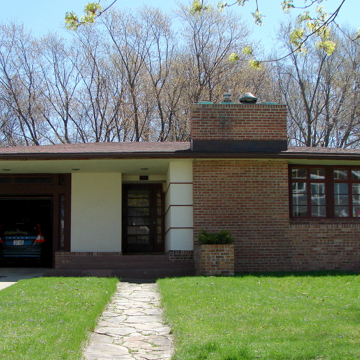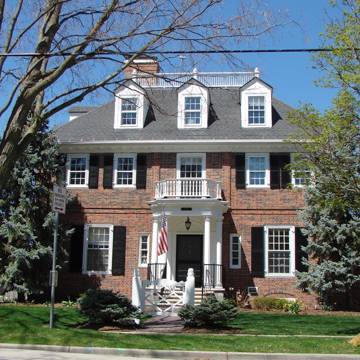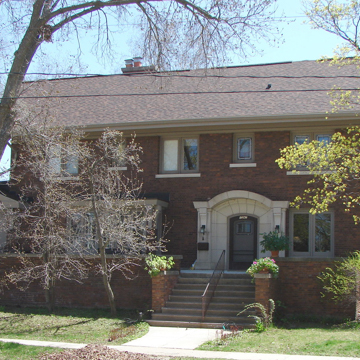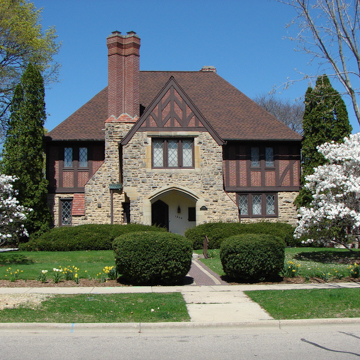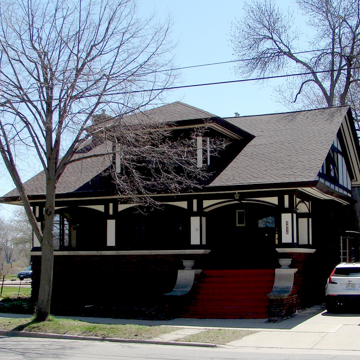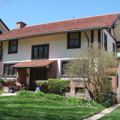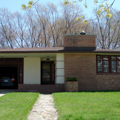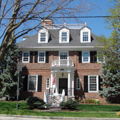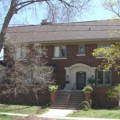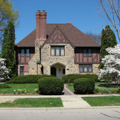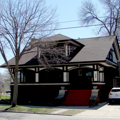Created on former marshland along the shores of Lake Mendota, the Sherman Avenue district grew during Madison’s first era of suburban expansion in the 1890s. Members of Madison’s professional and business class built spacious houses on the west side of Sherman Avenue, all with lake frontages. Sherman Avenue itself became a popular scenic drive at that time.
The neighborhood is known for its Prairie designs, but it also boasts houses in Queen Anne, Craftsman, and various period revival styles. Among the district’s outstanding Prairie Style houses is the Louis and Marie Hirsig House (1913; 1010 Sherman) by Alvan Small. The eaves hang low over the two-story stuccoed walls, creating a pronounced shadow, and this horizontal line is echoed in the casement windows. The modern Milford and Margaret Viles House (1938; 1031 Sherman) contrasts sharply with the historicism of its surroundings. At first glance it seems out of place. Yet the one-story hipped-roofed house with a wide front chimney, a ribbon window, and horizontal banding at the entrance is a direct descendant of Prairie Style architecture found nearby. The Viles House was designed by local architect William V. Kaeser more or less in the Usonian mode promulgated from the 1930s by Frank Lloyd Wright.
One of the most imposing houses in the neighborhood is the Harry and Jessie Butler House (1916; 1040 Sherman) by Frank M. Riley. The red brick Georgian Revival residence incorporates a steep hipped roof pierced by gabled dormers and surmounted by a roof balustrade. Ornate Corinthian columns support a balustraded entrance portico. Claude and Starck also made their mark in the neighborhood with one of their finest Prairie Style designs for Emil and Irma Hokanson (1916; 1047 Sherman). The gabled roof, the grooved horizontal joints in the dark red brick walls, and the bands of casement windows filled with stained glass are stylistic hallmarks. The arched canopy above the entrance recalls the work of George Maher of Chicago, who worked with Claude in the offices of Louis Sullivan.
In 1929, Harry M. Warner built the house at 1250 Sherman as a speculative investment. For it, Riley created a richly textured surface. The steeply pitched roof with flared eaves shelters walls of herringbone brickwork and rough-cut Madison sandstone. False half-timbering, diamond-pane casement windows, an arched entrance, and paired chimneys create an unusually detailed interpretation of Tudor Revival. The William and Marci Lewis House (1915; 1315 Sherman) is a fine example of a Craftsman bungalow, with details appropriately selected from those favored by adherents of the Arts and Crafts movement. These include the horizontal grooves in the brickwork and the decorative half-timbering.



